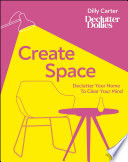

The book delves into how the design of our environments influences our creative output. By intentionally designing spaces that inspire and motivate, individuals can enhance their creativity. This includes considerations of lighting, layout, and even color schemes. The author provides examples from successful companies that have prioritized creative spaces, illustrating how these environments lead to increased collaboration and innovation. The key takeaway is that the physical space we inhabit can significantly impact our ability to think outside the box and generate new ideas.
Continue readingCreating physical and mental space is crucial for innovation and productivity. The book emphasizes that in a world filled with distractions, both personal and professional, carving out a space allows individuals and teams to focus on what truly matters. This space can be literal, such as a dedicated office or workspace, or it can be metaphorical, such as mental clarity achieved through mindfulness. The book discusses various techniques to declutter both environments and minds, advocating for minimalism in our physical spaces and mental frameworks to foster creativity and effective problem-solving.
Continue readingMindfulness practices are highlighted as essential tools for maintaining focus in an increasingly chaotic world. The book discusses techniques such as meditation, deep breathing, and time-blocking, which help individuals cultivate a sense of presence and awareness. By integrating these practices into daily routines, individuals can enhance their productivity and creativity. The author emphasizes that creating mental space is as important as physical space, arguing that a cluttered mind can hinder the creative process and lead to burnout.
Continue readingThe book underscores the value of collaboration in fostering innovation. It argues that creating space for community and teamwork can lead to richer ideas and solutions. The author shares insights on how to build a collaborative culture within organizations, including the importance of open communication, trust, and shared goals. By creating environments that encourage teamwork, organizations can leverage diverse perspectives and skills, ultimately driving better outcomes. The focus on community also extends to the importance of networking and building supportive relationships outside of formal work environments.
Continue readingIn today's fast-paced world, the ability to adapt to change is paramount. The book advocates for creating flexible spaces that can evolve with the needs of individuals and teams. This flexibility applies not only to physical spaces but also to workflows and processes. The author discusses strategies for embracing change, such as iterative design and agile methodologies, which allow teams to pivot quickly in response to new information or challenges. The key message is that organizations and individuals must be willing to let go of rigid structures to foster innovation and responsiveness.
Continue readingTechnology plays a significant role in creating and optimizing space for productivity and creativity. The book explores various tools and platforms that facilitate collaboration, communication, and project management. It discusses how technology can help streamline processes, reduce distractions, and enhance focus. The author emphasizes the importance of selecting the right tools to support the creation of effective spaces, whether they are physical or virtual. The integration of technology into the workspace is presented as a way to enhance efficiency and foster a culture of innovation.
Continue readingThe final key idea revolves around the importance of sustainability in creating spaces. The book argues that long-term thinking should guide our decisions about space, whether in terms of environmental impact or the longevity of ideas. It encourages readers to consider how their choices affect not only their immediate environment but also the broader community and future generations. The author provides examples of sustainable practices that can be integrated into workspace design and organizational culture, advocating for a holistic approach to creating spaces that are not only productive but also responsible.
Continue reading